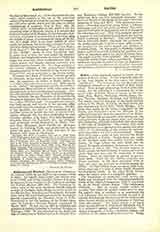

Kafirs a term popularly applied to nearly all the natives of South Africa. It was originally imposed by the Arab traders of the East coast, and means “unbeliever”. The natives do not use the word, but distinguish themselves by the names of their many tribes. Even in legal phraseology there is some confusion; but the following is a serviceable list of the native races of South Africa as known to the law: Kafir, Zulu, Basuto, Bechuana, Pondo, Fingo, Griqua, Damara, Koranna, Bushman, and Hottentot. The almost universal language of the South African natives is the Bantu, of which the Kafir group has four subdivisions, Xosa, Zulu, Tabele, Mfengu. It is likely that many of the tribes evangelized by the Jesuits and Dominicans from the fifteenth to the eighteenth centuries were the ancestors of our Kafirs. When the Catholic missionaries were driven out, the native converts could not stand alone, and relapsed into barbarism, although individuals had risen high in the scale of civilization. The terrible Zulu chief Chaka carried on an aggressive war against the other tribes, at the beginning of the nineteenth century, and over a million are said to have perished. Thence until 1879 came a series of wars between the Kafirs and the British or Dutch. Today there are, south of the Zambesi, some five million natives, chiefly Kafirs. In Cape Colony, the state which has the largest European population, Europeans are to non-Europeans as 100 to 316. The greatest number of Kafirs occupy the land by tribal or communal tenure, under their own laws and the suzerainty of Great Britain. Some are squatters on private or government lands. There are also mission locations and labor locations. A few have individual titles to land, and some are scattered as servants among the whites. In Cape Colony there are about 5500 registered voters out of a total of about twenty thousand non-European voters. In the other South African states the native voter is a negligible quantity.
The importance of missionary work among the Kafirs may be gauged from the following remarkable words of the Native Commission, 1903-5, appointed by all the South African States: “The commission considers…that no merely secular system of morality that might be applied would serve to raise the native’s ideal of conduct, or to counteract the evil influences that have been alluded to, and is of opinion that hope for the elevation of the native races must depend mainly on their acceptance of Christian faith and morals.” The tribal system is in many ways an impediment to missionary enterprise, but it is a safeguard against political combination. The native is incapable of being a moderate drinker, and abolition is the policy in all native reserves. Polygamy is decreasing slowly but surely. The dangerous Ethiopian movement (the revolt of native Christians from the control of white missionaries) is felt in all Protestant missions, but has had little footing in Catholic stations. The principal Catholic Kafir missions are now in the hands of Trappists, Oblates of Mary Immaculate, and Jesuits. Full statistics are not obtainable. The census of 1904 shows that in Cape Colony Catholics of non-European descent were under 5000. The Trappists have 58 priests, 223 lay brothers, and 328 nuns, working among the natives; 82 schools, and 42 mission stations. About 12,000 Kafirs in South Africa today have been trained in Trappist stations.
SIDNEY R. WELCH

